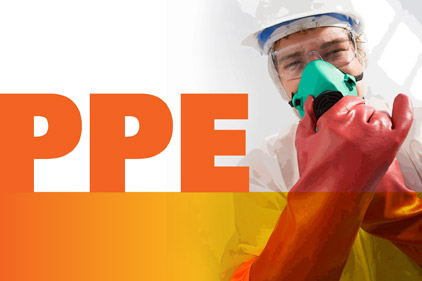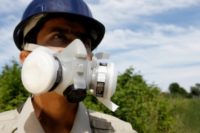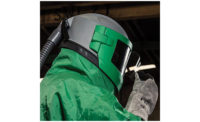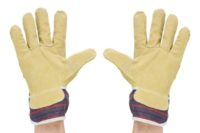 Respirators had been used by employees in about 10 percent of the private industry workplaces surveyed in late 2001. In nearly half of these 619,400 establishments where respirators were used, they were used by employees on a voluntary basis only, and, in about 12 percent, they were used only when required because of emergencies. These data are from a special survey conducted by the Bureau of Labor Statistics, U.S. Department of Labor, for the National Institute for Occupational Safety and Health, Centers for Disease Control and Prevention.
Respirators had been used by employees in about 10 percent of the private industry workplaces surveyed in late 2001. In nearly half of these 619,400 establishments where respirators were used, they were used by employees on a voluntary basis only, and, in about 12 percent, they were used only when required because of emergencies. These data are from a special survey conducted by the Bureau of Labor Statistics, U.S. Department of Labor, for the National Institute for Occupational Safety and Health, Centers for Disease Control and Prevention.
In 90 percent of the establishments that reported required respirator use, employees had used respirators in the 12-month period prior to completing the survey. More detailed information was collected from these establishments with fairly recent respirator use. A total of 3.3 million employees, or about 3 percent of all private-sector employees, were included in this group.
Of the 281,800 establishments that used respirators during a prior 12-month period, nearly 98 percent reported required non-emergency use ). Other findings from establishments that had required use of respirators in a 12-month period include:
• Ninety-five percent of these establishments reported using air-purifying respirators, while approximately 17 percent used air-supplied respirators.
• Almost 15 percent of these establishments reported using both air-purifying and air-supplied respirators.
• Non-powered air-purifying respirators were used in approximately 94 percent of these establishments. Less than 15 percent used powered air-purifying respirators.
• Dust masks were reported to be the most common type of air-purifying respirator used by these establishments, accounting for more than 71 percent of all use.
• Self-contained breathing apparatus (SCBA) were reported by these establishments to be the most commonly used air-supplied type of respirator, at nearly eight percent.
• Establishments reported paint vapors (110,700 establishments) and dust (106,700 establishments) to be the most common reasons for workers to wear air-purifying respirators, while paint vapors (21,600 establishments) and solvents (13,300 establishments) were the most common reasons for wearing air-supplied respirators.
• Employees regarding respirator use: Fifty-nine percent of these establishments reported that employees are trained to understand the use and limitations of the respirators they wear; 32 percent reported that employees follow the respirator manufacturers’ instructions; and approximately nine percent reported that training is not required because it is not needed.
• Establishments reported that the following best described how respirators are used at their company: Thirty-four percent of all establishments determine the use of respirators by a written program adopted by management; almost 23 percent reported that supervisors decide based on employee input and job characteristics; 22 percent reported that employees decide based on job characteristics; and 20 percent reported that respirator manufacturers' written instructions determine how respirators are used.
• More than 57 percent of these establishments reported using safety data sheets to determine which type of respirator is appropriate for substance(s) encountered by their employees.



